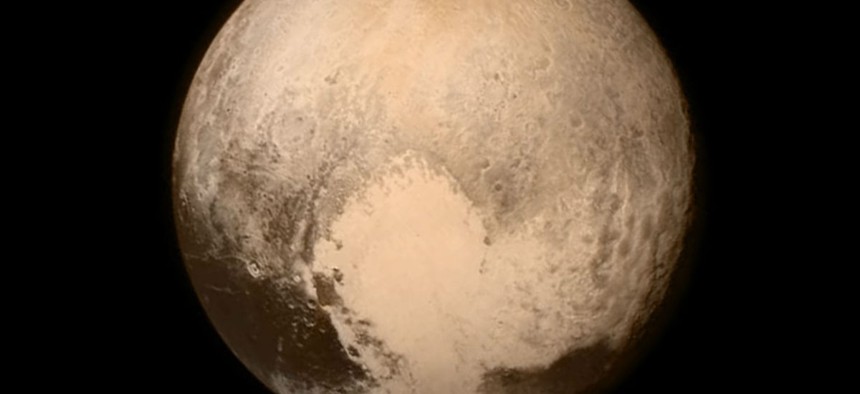NASA’s Next Frontier: A Billion Miles Beyond Pluto

This image of Pluto was taken from the Long Range Reconnaissance Imager (LORRI) aboard NASA's New Horizons spacecraft, on July 13, 2015. NASA
It's time for the next adventure.
Now that the New Horizons craft has cruised past Pluto, it's time for the next adventure: heading to 2014 MU69, a small Kuiper Belt object nearly a billion miles beyond the beloved dwarf planet.
At least that's what the NASA team wants to do. Per NASA policy, researchers must first submit a proposal for the second mission of New Horizons, which left Earth about nine years ago. The earlier they get the green light to head to 2014 MU69—even before the proposal is due—the better. Here's NASA on the reasons why:
...the team needs to direct New Horizons toward the object this year in order to perform any extended mission with healthy fuel margins. New Horizons will perform a series of four maneuvers in late October and early November to set its course toward 2014 MU69 – nicknamed "PT1" (for "Potential Target 1") – which it expects to reach on January 1, 2019. Any delays from those dates would cost precious fuel and add mission risk.
2014 MU69 lives in the Kuiper Belt, a far region of the solar system that contains objects mostly made of ices—frozen gases like methane, ammonia and nitrogen. Kuiper is similar to the asteroid belt, which is located between Mars and Jupiter. In March, the Dawn spacecraft gave us a glimpse of the asteroid belt's biggest objects, Ceres. Lastly, let's join New Horizons for a parting look at Pluto:



